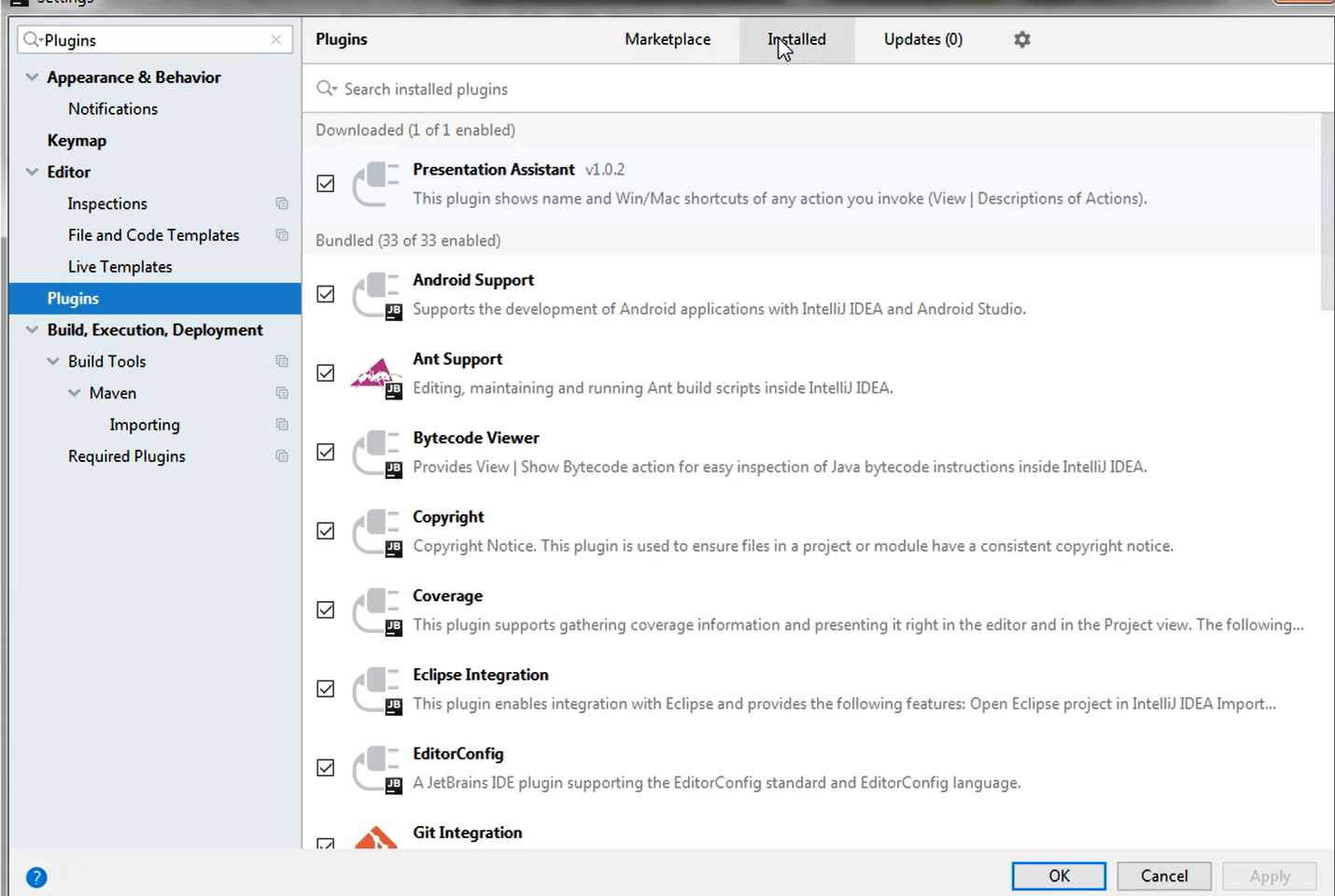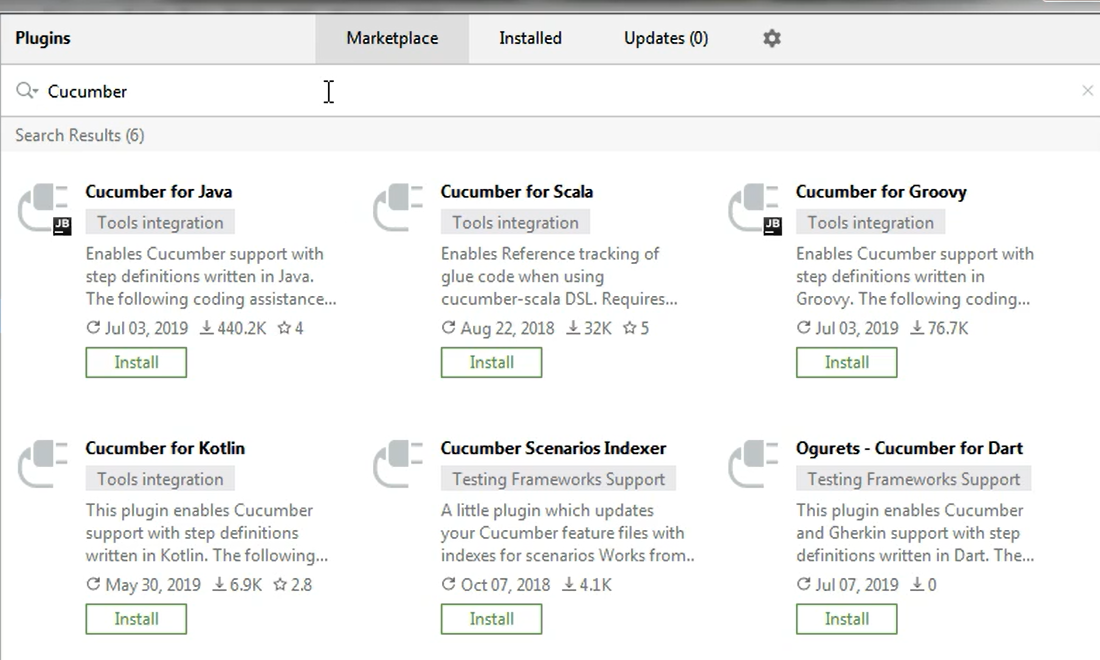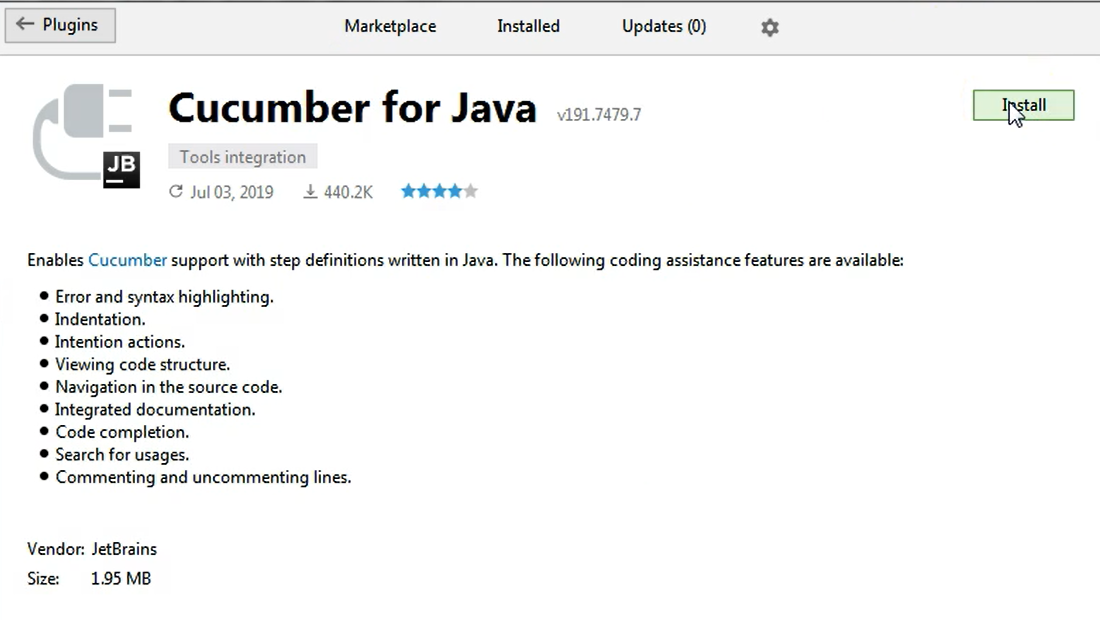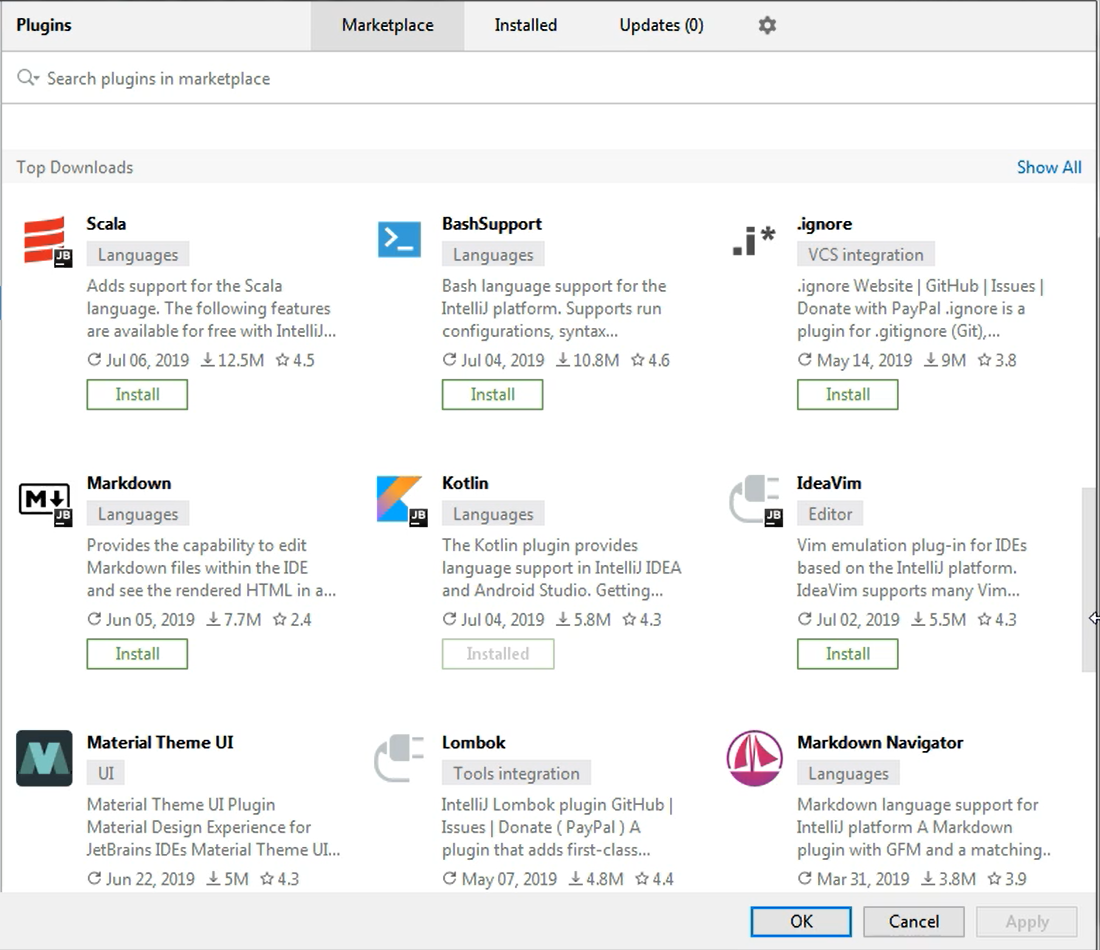
Transcripted Summary
In this last chapter I will briefly go over updating and plugins.
Every year new versions of IntelliJ are being released. These come in 2 flavors: major releases and some minor releases.
Major releases of course contain a whole set of new larger features whereas the smaller updates are just bug fixes.
Whenever a new update is available to be downloaded, in the editor on the lower side of the screen on the right side you will have a popup that will let you know of the newly available version. At this time, there is no new available version to update to, however, I will just tell you shortly what happens.
If the update is one of those major versions, usually you will have to download the new version yourself, so it won't be an auto-update by IntelliJ.
You will have a popup where you will see the location of the newly released version, which you will need to download and install just as if you were installing a brand-new version.
Keep in mind when you do that, that in the first chapter we discussed installation and there we have the option to import settings from an older version. So when you're updating to a newer version, you don't need to delete the current version yourself, instead you will need to download the new kit, and install it from there.
You can choose to remove an older version if you have one, and you can choose to import the settings from the older version. This means, for example, that your test configurations, will not disappear. You won't need to create them all from scratch in case you have something like this.
Smaller updates will not require you to download a new installation kit, instead the update will be done directly from IntelliJ as you will have the option to just click a button, choose to Auto Update, and IntelliJ will do the rest.
This usually comes also with a restart. So, once the installation is complete, there is a restart and once the restart has been successful, you have the new version available and you can work directly with it.
In order to manually check for an update, you can go to Help > Check for Updates, so this is something that you can do at any time. However, by default, the check for updates is enabled automatically. As I mentioned, currently there are no updates available so there is nothing to update.
On the other hand, if you want to enhance the features that you have in IntelliJ, you could go to File > Settings, and then you can search for plugins by typing in the search box of course.
There is a list of already installed plugins. So, if you go to the Installed tab you will see what are all the plugins that your IntelliJ Instance currently has installed.

For example, Groovy, Maven, Kotling, and so on, so all kinds of plugins.
If you're looking for something in particular that is not included in the current installation, you can just go to the Marketplace and you can start typing whatever it is that you're interested in.
For example, if you want some Cucumber plugins, you could just say “cucumber”, hit Enter, and then choose one of the available tools.

For example, if you were to choose the _Cucumber for Java _plugin, you will see some information about it and then you will be able to install it and probably you will need a restart of the IntelliJ Instance.

There are all kinds of plugins available so you could just take a look here. You could browse through them.
There's also some featured ones, then there's the newly available ones, and so on and so on.

So basically, you can customize your IntelliJ Instance with the plugins that you require if they are not already installed.
That concludes our course on IntelliJ.
I really hope you found the information that I've shown you here useful and that you will consider using this as your tool of choice for writing your further tests.
I wish you good luck with all of your testing and I'll see you soon.
